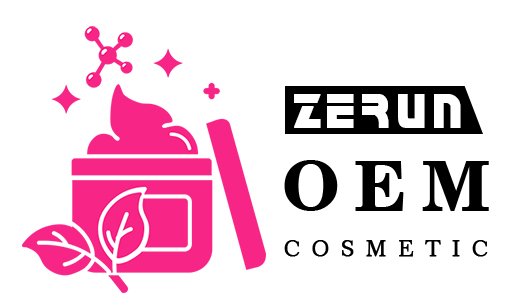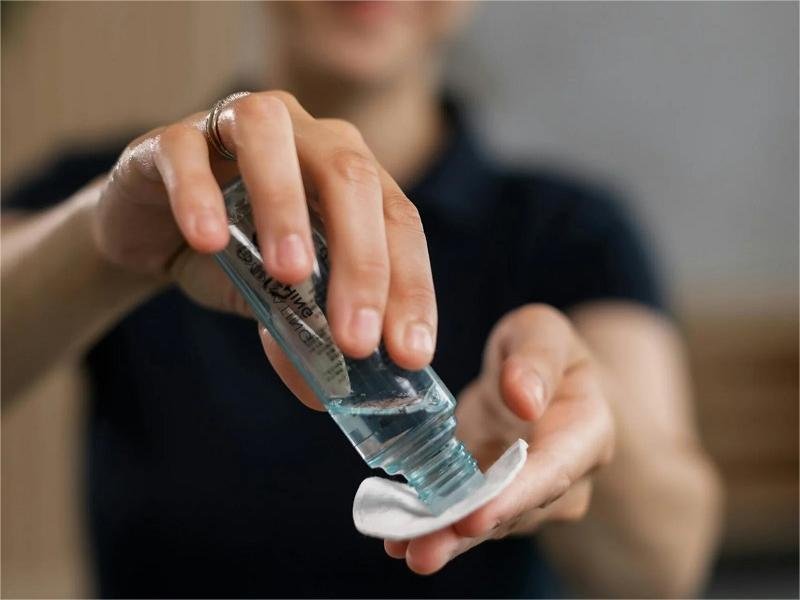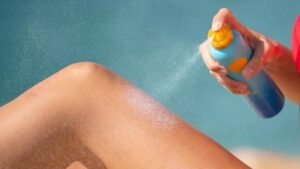Ever looked in the mirror and wished there was a simple yet powerful way to reveal smoother, brighter skin? You’re not alone. Many skincare enthusiasts are on a quest for that radiant glow, and glycolic acid exfoliating toners have quickly become one of the most buzzworthy solutions in the beauty world.
To use a glycolic acid exfoliating toner effectively, start by cleansing your face thoroughly. Then apply the toner onto a cotton pad and gently swipe it across your skin, avoiding the eye area. Follow up with a moisturizer and sunscreen to protect newly exfoliated skin. Gradually increase usage for enhanced results.
In this article, we’ll unpack everything you need to know about these potent exfoliators. From which skin types can benefit the most to how often you should really be using them, prepare for an in-depth guide that promises you a more informed and empowered skincare routine.
What Is Glycolic Acid Exfoliating Toner and Why Should You Use It?
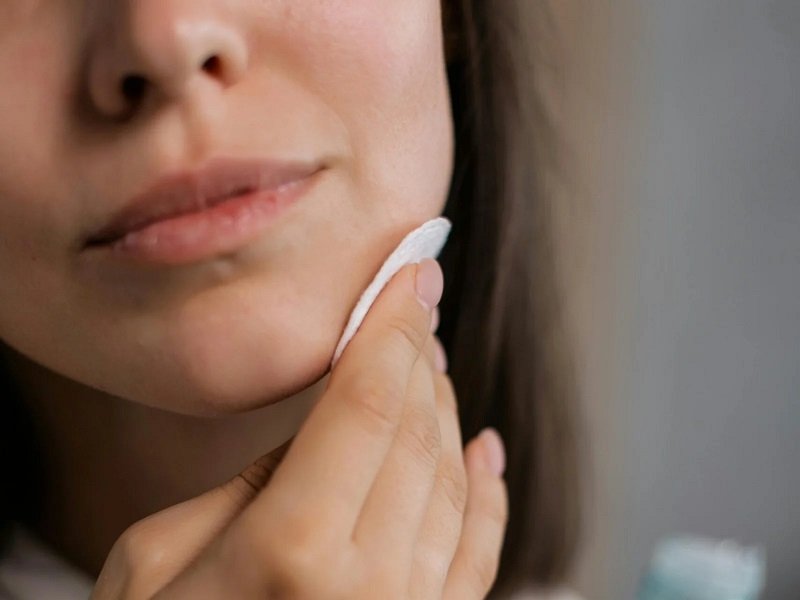
A glycolic acid exfoliating toner is a skincare solution containing a low concentration of glycolic acid that gently dissolves dead skin cells. Its key advantage is delivering smoother, brighter skin without excessive irritation, making it ideal for regular use.
Glycolic Acid
Glycolic acid is an alpha hydroxy acid (AHA) derived from sugar cane. It has the smallest molecular size among AHAs, which allows it to penetrate the skin more effectively than many other acids (like lactic or mandelic acid). When used in a toner, glycolic acid focuses on sloughing off dead skin cells at the surface, uncovering the fresh, healthy layers beneath. This action not only reveals a brighter complexion but also improves the overall texture of the skin.
How Glycolic Acid Toners Are Formulated
- Low Concentration for Daily Use: Most over-the-counter glycolic acid toners range between 2% and 10% concentration. These lower strengths are typically easier for beginners or those with sensitive skin to tolerate.
- Balanced pH: A properly formulated glycolic acid toner generally maintains a pH level between 3.0 and 4.0. This slightly acidic environment maximizes exfoliation without causing undue irritation.
- Supplementary Ingredients: Some toners may include calming agents like aloe vera, chamomile extract, or hyaluronic acid to help offset potential dryness or sensitivity.
Key Benefits of Using a Glycolic Acid Toner
- Effective Exfoliation: The main draw is its ability to remove dull, dead surface cells, revealing smoother, more vibrant skin underneath.
- Enhanced Product Absorption: Once those dead skin cells are lifted away, serums and moisturizers can penetrate better, making the rest of your routine more effective.
- Brightening and Evening Out Skin Tone: With regular use, many people notice diminished appearance of fine lines, mild hyperpigmentation, and uneven skin texture.
- Minimized Congestion: By preventing the buildup of debris in pores, glycolic acid toners can help reduce the frequency of blackheads and whiteheads.
Why Glycolic Acid Toners Are So Popular
- Gentler Than Physical Scrubs: While “acid” can sound intimidating, chemical exfoliation (in the right concentration) is often more predictable and less abrasive than manual scrubbing.
- Versatility Across Skin Types: Although primarily recommended for normal, combination, and oily skin, low-strength glycolic acid toners can be adapted for nearly every skin type. Even those with drier skin can use it effectively by pairing it with a deeply hydrating moisturizer.
- Visible, Progressive Results: Consistent application can yield gradual improvements in clarity, glow, and smoothness—often noticeable within a few weeks.
Potential Downsides and How to Manage Them
- Possible Irritation: Redness, tingling, or minor dryness can occur, especially if you’re new to acids. Start slowly—maybe once or twice a week—and observe how your skin responds.
- Sun Sensitivity: Glycolic acid can make your skin more sensitive to ultraviolet rays. Sunscreen (SPF 30 or higher) is a non-negotiable step when using any exfoliating product.
- Over-Exfoliation Risk: Mixing too many exfoliating products (like other AHAs, BHAs, or retinoids) all at once can damage the skin barrier. If you plan to introduce multiple actives, space them out on different days or seek professional guidance.
Who Benefits the Most?
- Acne-Prone Skin: By loosening the “glue” holding dead cells together, glycolic acid toners help prevent clogged pores—often a key factor in breakouts.
- Dull or Sun-Damaged Skin: Mild sun damage or lackluster complexion can see renewed brightness and improved texture.
- Aging Skin Concerns: With consistent use, glycolic acid supports more efficient cell turnover, which can soften the look of fine lines and wrinkles.
- Product Junkies Looking for a Boost: If you already have a stable skincare routine but crave an extra glow, introducing a glycolic acid toner might give you the edge you’re missing.
Practical Tips for Getting Started
- Patch Test First: Apply a small amount behind your ear or on your jawline. Monitor for 24–48 hours to ensure there’s no extreme reaction.
- Incorporate Gradually: Begin by using it once or twice a week. If your skin remains calm, increase to every other day or even daily, depending on the toner’s strength and your skin’s tolerance.
- Follow with Moisture: Because glycolic acid exfoliates, skin can feel a bit dry or tight afterward. Seal in hydration with a nourishing moisturizer or facial oil.
- Stay Sun-Safe: Never skip sunscreen. UV protection is crucial to preserve your results and avoid further damage, especially since freshly exfoliated skin is more sensitive to sunlight.
Glycolic acid exfoliating toner acts like a gentle chemical peel in a bottle. It diminishes dullness, boosts cell turnover, and preps your skin for better absorption of treatments and moisturizers. If your skincare journey has been missing a simple yet effective tool for boosting radiance, introducing a well-formulated glycolic acid toner is a strategic move. Just remember: start low and slow, pay attention to your skin’s signals, and keep that SPF handy to protect your newly revealed glow.
Which Skin Types Can Benefit the Most From Glycolic Acid Toners?
Most skin types, from dry to oily, can benefit from a mild glycolic acid toner. However, individuals with acne-prone or sun-damaged skin often see the most noticeable improvements in texture, clarity, and brightness.
Oily and Acne-Prone Skin
- Exfoliation to Prevent Clogged Pores: Glycolic acid helps break down the buildup of dead skin cells and excess sebum, two major contributors to acne flare-ups.
- Supporting Clearer Complexion: Reduced congestion often translates into fewer blackheads, whiteheads, and even cystic bumps, making it a go-to for those struggling with persistent breakouts.
- Oil Regulation: Over time, consistent exfoliation can help balance the skin’s oil production, though results vary between individuals.
Dry and Dehydrated Skin
- Enhanced Moisture Retention: Removing dead skin cells allows moisturizers and serums to be absorbed more easily, giving parched skin the hydration it desperately needs.
- Gentle Renewal: While “acid” might sound harsh, low-percentage glycolic acid toners can be gentle enough to use on dry skin when paired with a robust moisturizing routine.
Combination Skin
- Targeted Care: Combination skin often has oily zones (T-zone) and dry patches (cheeks). Glycolic acid toners can help balance these differing needs by clearing excess oil in problem areas while still promoting even texture throughout the face.
- Flexible Routine: Some individuals use glycolic acid toner only on problem areas, applying it less frequently where the skin is drier or more sensitive.
Sensitive Skin Considerations
- Begin with Caution: People with sensitive or rosacea-prone skin might still benefit from gentle exfoliation, but it’s crucial to start with the lowest possible concentration (2–4%) and infrequent usage (once or twice a week).
- Always Patch Test: Spot-testing on a small area of the jawline or neck helps ensure your skin can tolerate the product without adverse reactions.
| Skin Type | Recommended Frequency | Concentration Range | Additional Notes |
|---|---|---|---|
| Oily/Acne-Prone | 3–4 times per week | 5–10% | Focus on T-zone; monitor for dryness or irritation. |
| Dry/Dehydrated | 2–3 times per week | 2–7% | Always follow with rich moisturizer to lock in hydration. |
| Combination | 2–4 times per week, as needed | 5–10% | Adjust usage on different areas of the face accordingly. |
| Sensitive | 1–2 times per week | 2–4% | Start slowly; perform a patch test before widespread use. |
How Does Glycolic Acid Work to Exfoliate and Renew the Skin?
Glycolic acid dissolves the “glue” holding dead skin cells together, promoting exfoliation and cellular turnover. This process reveals fresher, more vibrant skin underneath, enhancing texture, tone, and radiance over time.
Chemical vs. Physical Exfoliation
- Chemical Exfoliation: Glycolic acid falls under chemical exfoliation, which relies on acidic compounds to loosen and dissolve dead skin cells without scrubbing. This can be gentler and more consistent than physical exfoliation, which uses abrasives like scrubs.
- Less Micro-Tearing: Physical exfoliants can create tiny tears in the skin, potentially leading to irritation or sensitivity. Chemical exfoliants, applied in the correct concentration, help minimize this risk.
Accelerated Skin Cell Turnover
Skin naturally sheds dead cells about every 28 days, though this rate can slow with age or be disrupted by hormonal imbalances. By speeding up this turnover process, glycolic acid reveals new skin cells more rapidly, leading to that elusive glow many people crave.
Exfoliation’s Domino Effect on Other Products
Once the barrier of dead cells is removed or thinned, your serums, essences, and moisturizers can sink in more effectively. This is why many see better results from their entire skincare routine after introducing a properly formulated glycolic acid toner.
Why Proper pH Matters
For glycolic acid to work effectively, it needs to be in a pH range typically between 3.0 and 4.0. Many toners are specifically formulated to maintain this acidic environment. Using cleansers or creams with a very high pH right before or after may reduce the acid’s effectiveness. If you’re noticing diminished results, you might need to re-evaluate the surrounding products in your regimen.
Do You Need a Patch Test Before Applying Glycolic Acid Toner?
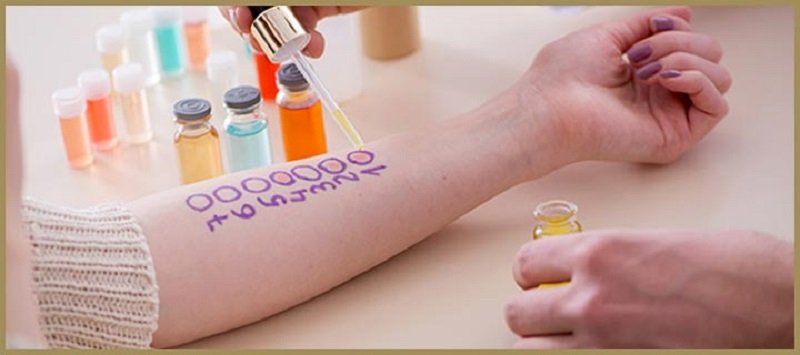
Yes, a patch test helps you spot adverse reactions, such as redness or itching, before applying glycolic acid toner to your entire face. This simple step can prevent bigger issues down the road.
Why Patch Tests Are Essential
Applying a new active ingredient like glycolic acid directly to your face without pre-testing can be risky. Sensitive skin or compromised skin barriers may react strongly, leading to redness, flaking, or even a burning sensation. A patch test, usually behind the ear or on the jawline, provides a controlled environment to gauge how your skin will respond over 24–48 hours.
How to Perform a Proper Patch Test
- Cleanse the Area: Gently wash the area you plan to test with a mild, pH-balanced cleanser.
- Apply a Small Amount of Toner: Use a cotton swab or pad to dab the glycolic acid product onto your test patch.
- Wait for Absorption: Let it dry and avoid overlapping with other skincare products on that spot.
- Observe: Check for any stinging, redness, or unusual sensations over the next 24–48 hours.
If you experience severe burning or persistent redness, discontinue use. If the test area remains calm and irritation-free, you can proceed with application on a larger area of your face.
Common Mistakes in Patch Testing
- Applying Too Much Product: Over-saturating your patch area can yield a skewed reaction. Use only as much as you would normally apply to your face.
- Rushing the Test: Some reactions can take longer to appear. Don’t decide it’s “safe” after just an hour; wait the full 24–48 hours to be sure.
- Changing Other Variables: Introducing multiple new products at the same time can confuse results. Patch test one product at a time to accurately pinpoint any potential problem.
How to Properly Incorporate Glycolic Acid Toner Into Your Daily Routine?
Cleanse and pat skin dry, then apply your glycolic acid toner. Follow with serums or treatments, moisturizer, and sunscreen. Starting slowly—once or twice a week—is key to allowing your skin to adjust without irritation.
Step-by-Step Guide to Using Glycolic Acid Toner
- Cleanse: Begin with a gentle, low-pH cleanser to prep your skin.
- Tone: Soak a cotton pad with your glycolic acid toner. Gently swipe over your face, avoiding the eye area.
- Serums or Treatments: After the toner has fully absorbed (usually within 1–2 minutes), apply any serums or treatments you have in your lineup.
- Moisturize: Lock in hydration with a moisturizer suited to your skin type.
- Sunscreen (Morning Routine): If it’s daytime, finish with a broad-spectrum sunscreen of at least SPF 30 to protect your newly exfoliated skin from UV damage.
Ideal Timing in Your Skincare Routine
- Morning vs. Evening: Many prefer to use glycolic acid toners in the evening, as the skin is in a regenerative mode overnight. Evening application also sidesteps immediate UV exposure, further reducing risks of photosensitivity.
- Frequency: If you’re new to glycolic acid, start with once or twice a week, then gradually build up to 3–4 times or even daily usage if your skin tolerates it well.
Layering Tips for Best Results
- Avoid Over-Exfoliation: If your cleanser or other products contain exfoliating ingredients, using glycolic acid toner on top can be too much. Consider spacing out exfoliating products to different days.
- Pay Attention to Acids and Retinoids: Combining multiple strong actives (e.g., glycolic acid plus retinol) can irritate your skin. If you need both, consider alternating nights or seeking professional advice.
Making Adjustments Over Time
Your skin’s needs may change due to weather, hormones, or stress. Stay attuned to signals like excess dryness or sensitivity—these signs mean it may be time to scale back usage until your skin regains balance.
Are There Any Side Effects and How Can You Minimize Them?
Common side effects include mild irritation, redness, and dryness. Start with lower concentrations, apply moisturizer, and use sunscreen diligently to reduce these issues.
Typical Side Effects You Might Encounter
- Mild Stinging: A slight tingling or stinging sensation can happen when applying glycolic acid, especially in the beginning.
- Redness: New users or those with sensitive skin may notice temporary redness.
- Flaking or Peeling: Exfoliation can cause minor peeling, indicating the shedding of dead skin cells.
When to Be Concerned
- Burning or Extreme Sensitivity: If your skin feels like it’s on fire or you experience persistent pain, wash off the product immediately.
- Swelling or Hives: These signs could indicate an allergic reaction. Seek medical advice if they persist.
- Unusual Hyperpigmentation: While glycolic acid can help fade certain pigmentation issues over time, incorrect or excessive use (especially without sun protection) can risk exacerbating them.
Minimizing Irritation: Practical Tips
- Spot Check: Test on a small, inconspicuous area before using on your entire face.
- Use Low Concentrations First: If you’re new to acids, 2–5% is a good starting range. Move to higher concentrations only after your skin has adapted.
- Layer Gently: Avoid using other strong actives (like retinol or other AHAs) at the same time until you’re sure your skin can handle it.
- Keep Skin Hydrated: A robust moisturizer and hydrating serum can help soothe and protect your skin barrier.
Special Considerations for Different Climates
- Dry or Cold Climates: Skin is naturally more prone to dryness; reduce frequency and layer on heavier moisturizers.
- Hot or Humid Climates: Excessive sweating can irritate skin, especially post-application. Opt for light, breathable moisturizers and keep an eye on how your skin reacts.
How Often Should You Use Glycolic Acid Toner for Optimal Results?
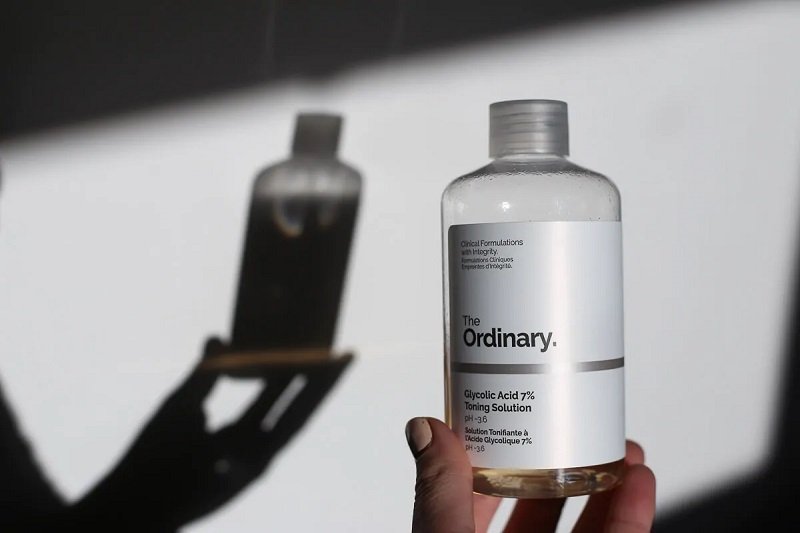
Begin with once or twice a week, then gradually increase to 3–4 times weekly or daily if well-tolerated. Individual needs vary, so monitor your skin and adjust accordingly.
Finding the Right Frequency
- Begin Conservatively: Start slow if you’re new to glycolic acid, especially if you’ve had past sensitivity issues.
- Observe and Adapt: If your skin remains calm—no redness, no severe dryness—you can inch upwards in frequency. Watch for subtle signs of over-exfoliation, such as flaking or increased sensitivity.
Seasonal Adjustments
- Winter Months: The colder season can lead to drier skin; you might need to cut back on your usage or use a lower concentration.
- Summer Months: Increased sun exposure means you should be diligent with sunscreen. If you’re prone to sensitivity, spacing out usage (every other day instead of daily) might help.
Matching Frequency to Concentration
If you’re using a higher percentage of glycolic acid (10% or more), it’s wise to limit usage to about 2–3 times a week. Lower percentages (2–5%) can often be used more frequently, even daily for some individuals.
Balancing with Other Skincare Ingredients
- Retinoids: Generally regarded as another potent active, retinoids can work alongside glycolic acid when used on alternate nights.
- Vitamin C Serums: Some people enjoy applying glycolic acid toner at night and a vitamin C serum in the morning to avoid irritating the skin by stacking strong actives back-to-back.
- BHA (Salicylic Acid): If you also need pore-focused exfoliation, consider using salicylic acid in the morning and glycolic at night or alternating days.
Conclusion
Glycolic acid exfoliating toners can be a game-changer, helping to shed dead skin cells, smooth out texture, and give your complexion that extra glow. From patch testing tips and layering advice to understanding your skin type’s unique needs, the journey toward radiant skin is often about thoughtful experimentation and consistent care.
If you’re searching for a tailored solution or want to create your own custom-branded skincare line, Zerun Cosmetic Factory has you covered. With years of experience manufacturing top-quality skincare products, Zerun can help you design and produce private-label or bespoke formulas that perfectly align with your brand vision. Reach out to inquire about our services, request samples, and start the conversation on bringing your ideal skincare product to life.
Remember, good skin is a journey, not a destination. Keep exploring, stay curious, and let each step bring you closer to the glowing complexion you’ve always wanted. Safe exfoliating—and see you on the brighter side!
